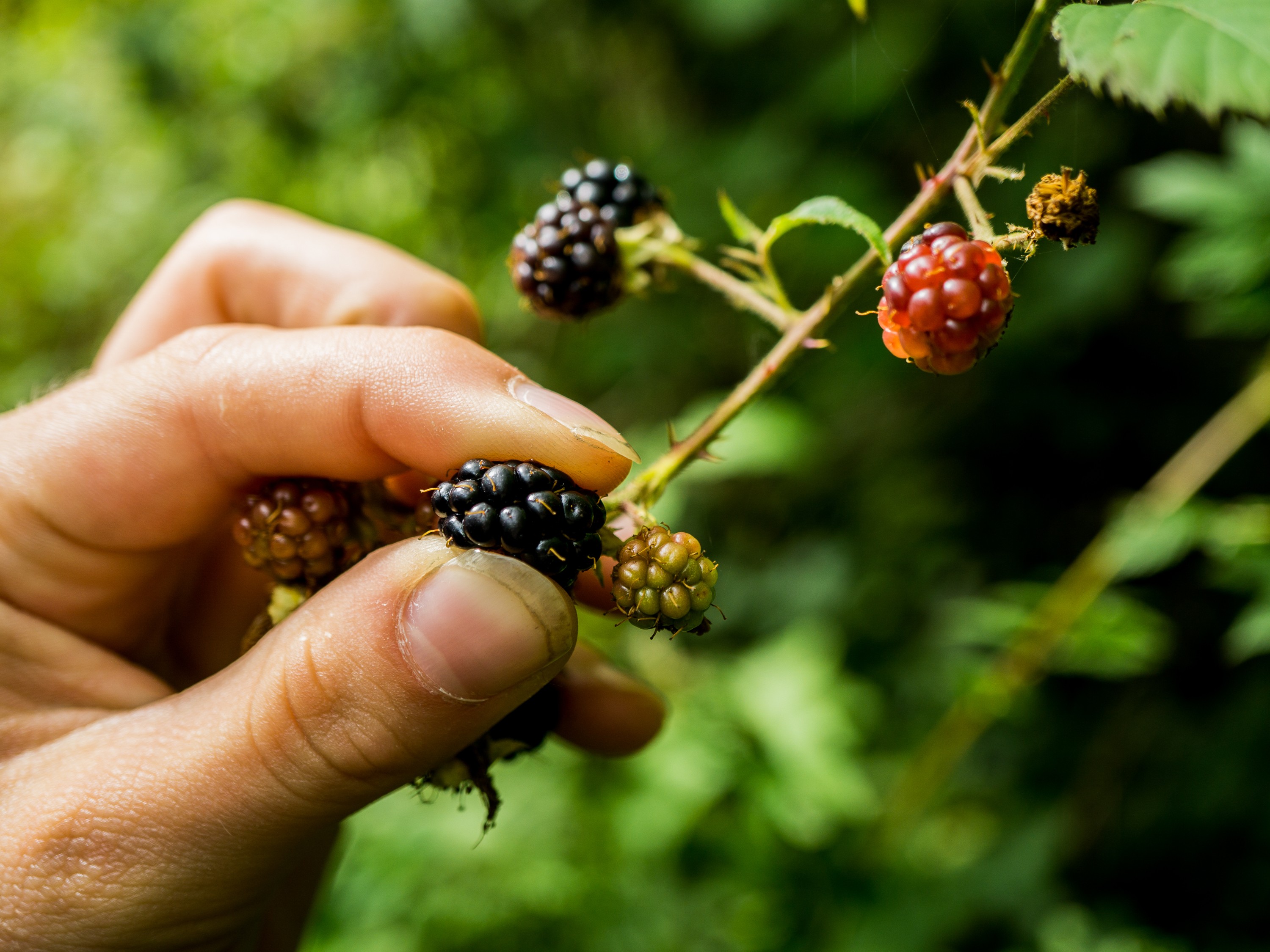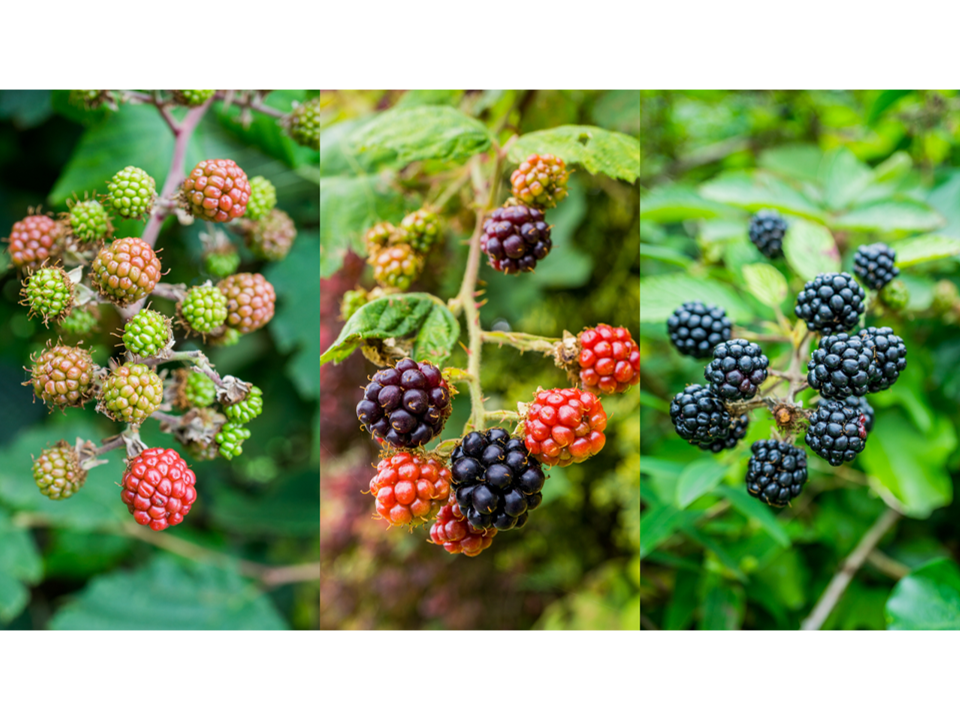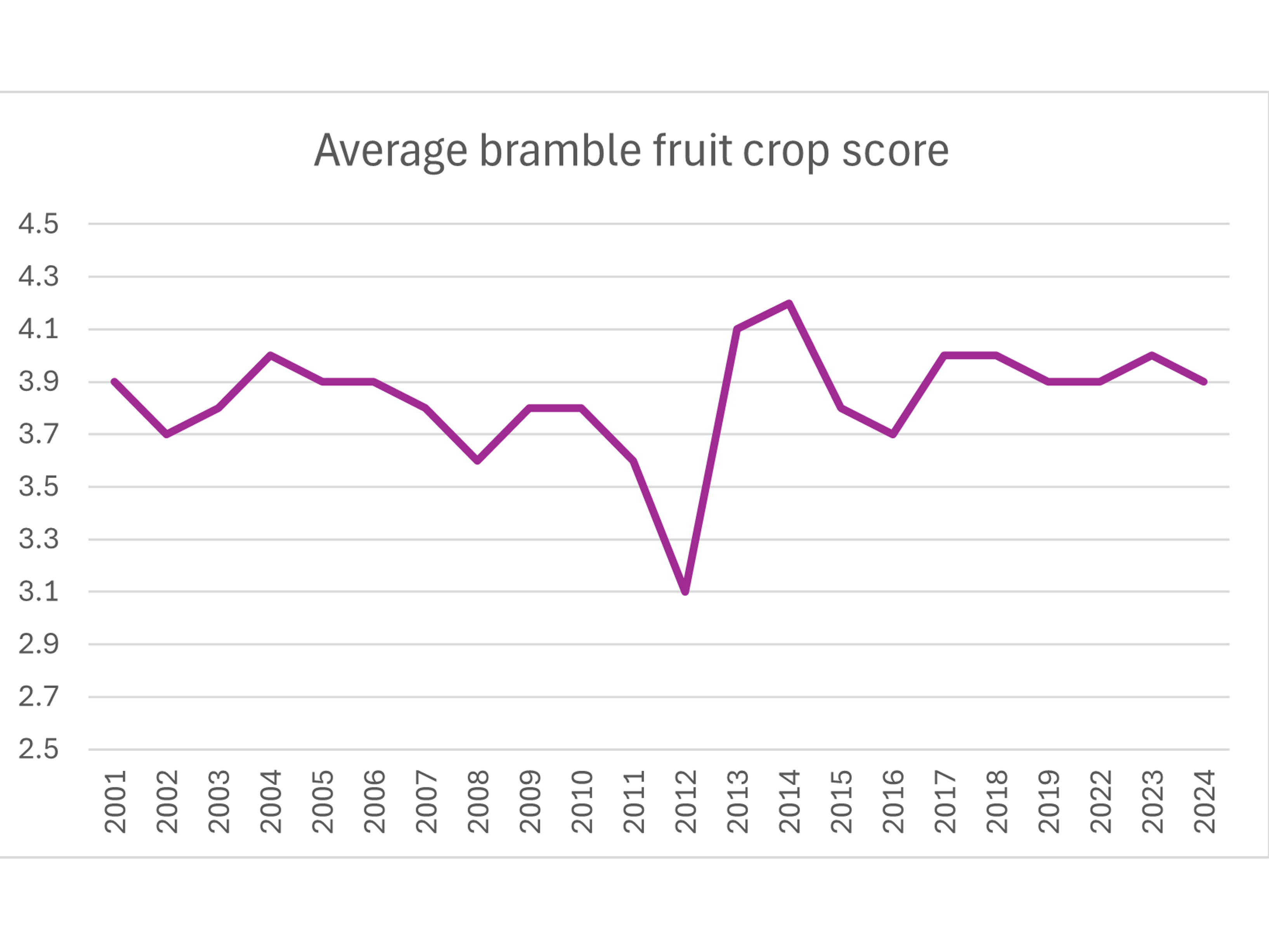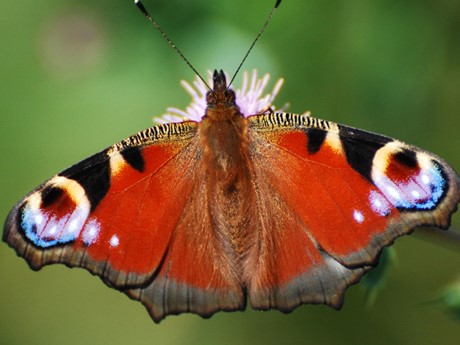It’s bramble season! Let us know when you spot your first ripe berry.
Alex Marshall, 30/06/2025
It’s blackberry season! Let us know when you spot your first ripe berry.
What to look for
On a bramble shrub that you can visit regularly (ideally once a week), record first ripe fruit when the first blackberries are soft to touch.
Expected Date Range: mid-July until early September.
We’ve already had our first ripe blackberry record! Recorded on 23rd June on the south coast of England.
Tip: You can do the ‘squish test’ to work out whether the blackberries are ripe enough to record. If they are, they’ll be easily ‘squishable’, if they still feel hard, that means they’re not yet ripe. You don’t need to wait for all berries on the same stem to ripen as this would be considered too late, as is shown in the images below, just one single ripe berry on the shrub is enough to record as the date of the first ripe fruit.

The squish test. Credit Ben Lee WTML

From left to right: Too early, just right, too late. Photo credit: Ben Lee WTML
What do previous Nature’s Calendar records show?
In 2018 the UK saw the earliest ever average first ripe fruit date for bramble, on 29th July. Last year the average was slightly later on the 2nd August, and the benchmark year (2007) had an average first ripe fruit date of 4th August.
2007 is used as a benchmark year because the mean monthly temperatures in autumn were similar to the 30-year average (1961-90) temperatures, according to the Met Office Central England Temperature (CET) dataset.
In 2014, we had our highest ever bramble fruit crop score of 4.2 out of 5. Last year’s fruit crop score was 3.9, and the average over the past 24 years is 3.8.

Fruit score is categorised as:
1 = no fruit
2 = meagre
3 = moderate
4 = good crop
5 = exceptional
According to the Met Office climate summaries, in spring 2025 the UK experienced record-breaking sunshine levels and consistently warmer than average temperatures.
This could suggest that insect activity may have increased compared to 2024, and as a result pollination rates may have increased, too, possibly leading to greater crop yields. Help us understand if this is the case by recording bramble fruit score this summer!
The stems of Bramble bear flowers and fruit in their second year, so that means the flowers and blackberries will be visible on last year’s new growth, not this year’s growth. There are around 20 seeds per blackberry fruit, they have a hard coat and a chilling requirement in order to germinate. As a result, seed often does not germinate until the second year after shedding.
Each year we produce seasonal reports using the data you send us – you can freely download them from our website.
How will this year compare? The only way we will know is if you let us know what’s happening with the brambles near you!
